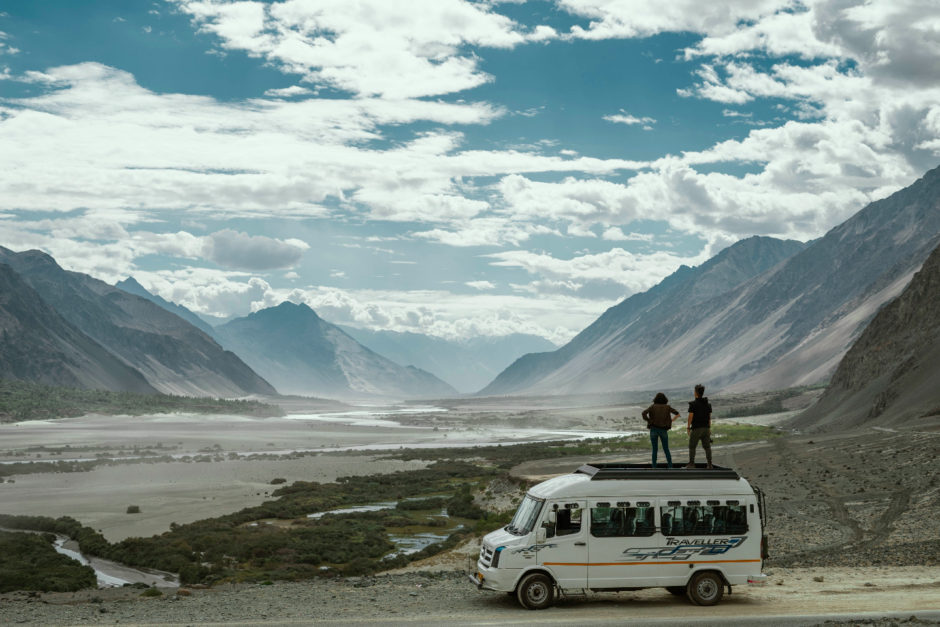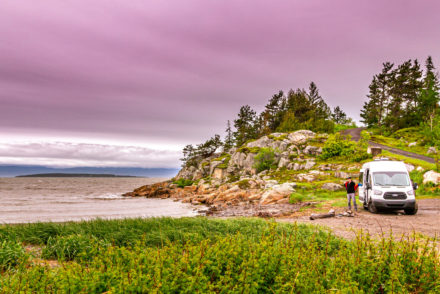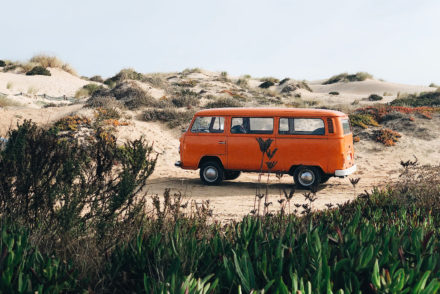The way van life is portrayed on YouTube, Instagram, and Tik Tok, living in a van seems so magical, so ideal. So. . . Unachievable.
But with the expensive van renovations, full-time travels, and laid-back lifestyle, you may wonder if that’s what van life is really like. Maybe you dream of living the van life, too, but question whether it’s for you.
Well, you’re in the right place. As a full-time van lifer, I’m here to tell you everything you want to know. From van life culture down to the details, it’s all right here in this article! (And if you’re here to consider van living for yourself, I’m going to spoil the ending. . . No matter who you are, van life is for you!)
MY STORY
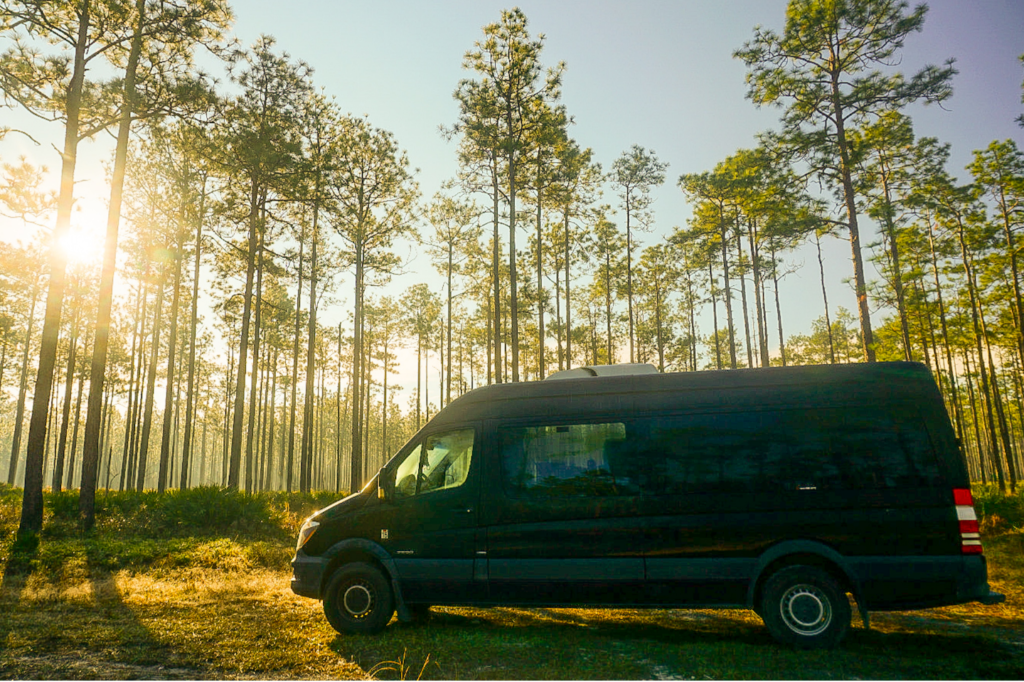
I’m trans non-binary and I live in a 2014 Mercedes-Benz Sprinter van. This van has been my home since October 2020. But my journey into this lifestyle wasn’t easy and it wasn’t necessarily by choice.
In May of 2020, the pandemic had me living in my car. I moved to a new city to start a new life and had every intention of finding a job and an apartment wherever I settled down. But the pandemic prevented that from happening.
For most of 2020, I was homeless and unemployed. I was privileged to have had savings that kept me on my feet and I worked side gigs to help make ends meet. After months of dead ends, I began building this blogging business and decided to live on the road full time. I saved up for a down payment on a van and in October got a loan for my Sprinter!
As I write this, my van is not renovated. But renovations will begin in the spring. And I will be sharing the build with you here on my blog and on the Traveling Homestead Project’s social media pages!
In the meantime, I am doing in-depth research on everything I need to know about living the van life. And I’m laying it all down here for you to access, too!
HXSTORY OF VAN LIFE
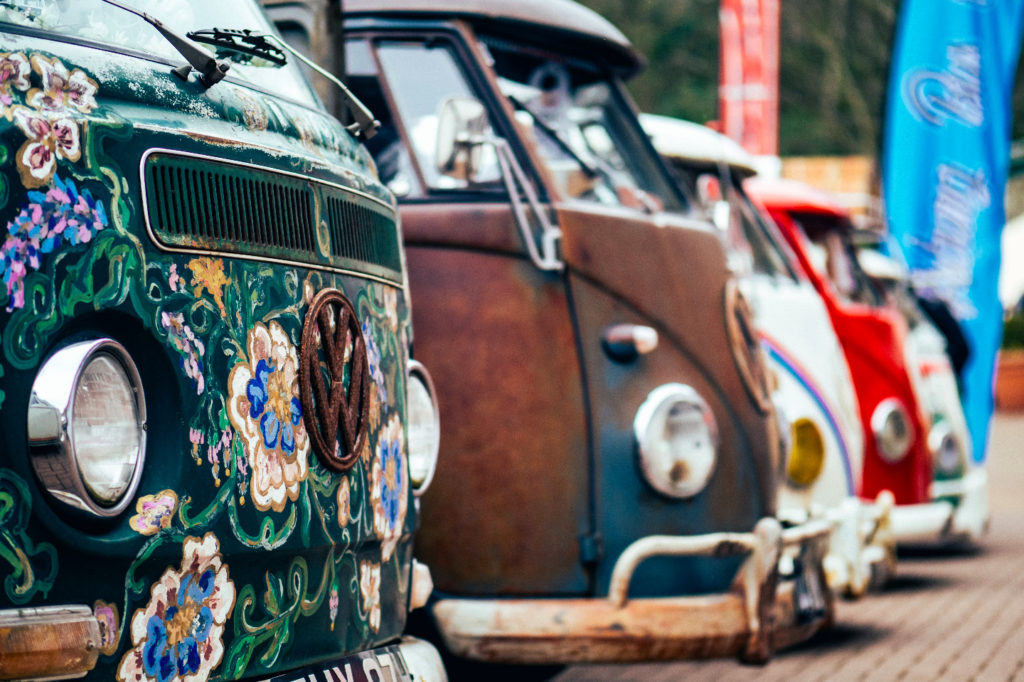
Van life was started in the 1960s by hippies searching for freedom and an alternative way of living. The movement was most prominent in the United States and Europe. Nomadic communities in the United States cropped up primarily throughout the west. A symbol of protest and escapism, the nomadic lifestyle was an important part of the counterculture of the ’60s and ’70s. (¹).
Once the Civil Rights Act was passed in 1964, the United States pulled out of the Vietnam War, and many influential movement leaders were assassinated (Malcolm X, MLK Jr., etc.), the counterculture movement lost a lot of steam. And therefore, so did the van life movement. Then when Nixon declared the War on Drugs in 1971, the United States government began targeting both the Black hippie communities in the country, impacting the van life movement further. (²).
As van life has been making a comeback this decade, the movement is taking on a much different face. Although there are plenty of people living in vans to escape societal expectations, there are many people living on the road for other reasons. Some are living on the road to live sustainably, some to fulfill their dreams of traveling full-time, there are even some who live in a van out of necessity. Housing crises in some wealthy countries are leading to people seeking alternative forms of housing.
VAN LIVING TODAY
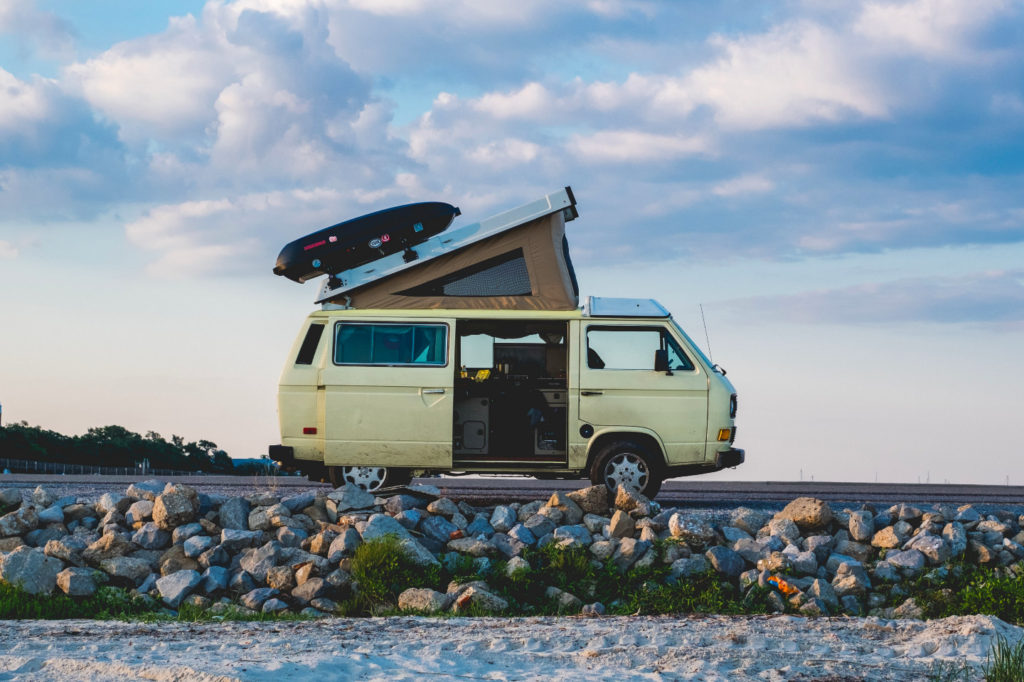
Van life culture is being revived. Every year, dozens of people, young and old, decide to live on the road. Today, there are van life communities, blogs, festivals, and more cropping up around the world. The lifestyle has become a dream for many and there are more people than ever helping others live their dream. The van life community, as it is, is largely composed of middle to upper-class cishet white people. But every day, that is changing. The van life community isn’t just the dream life, it is becoming a place of inclusion and liberation.
Why People Choose Living in a Van
There are three major reasons why people decide living in a van is right for them. Many people move into a camper van out of necessity. Plenty of other people move into a van to live off-grid and lead a sustainable lifestyle. And others choose the van life to travel the world full or part-time.
Necessity.
The United States and some other wealthy countries are experiencing housing crises across their cities. Average costs of rent are often too expensive for those working full-time, minimum wage jobs. This is pushing many young working-class people to find alternative housing methods. And living in a van is a relatively cheap and viable option.
Sustainability.
At first, you may think that the gas used to travel full-time in a van would create a big carbon footprint. However, most van lifers aren’t on the road every day. In fact, many stick to general areas. Plus, many van tiny homes are solar-powered and have other sustainable resources, and living in a tight space requires you to live minimally.
Adventure & Tranquility.
The primary reason so many people choose to live the van life is to be close to the natural world. To wake up with a view of the mountains, to be close to the trails, and to go to sleep without the sounds of the city. Most public land is open for free dispersed camping, which means there are thousands of beautiful parking spots around the world waiting for you!
Read more about why people choose the van life:
Van Life Culture
Outside of the glamorous Instagram photos and YouTube videos, what’s van life culture really like? How do van lifers make friends? Where do we find community? Every van lifer had these questions going into the lifestyle. Here’s what I know:
Communities Living in Vans
Public lands across the United States are beginning to hold communities of van lifers. Exploring public lands and dispersed camping sites across the country, it’s unlikely you won’t see other van lifers. There are also Facebook and Instagram communities forming online. These include Van Living and Camping, Solo Female Vanlife, and LGBT Vanlife on Facebook, and Vanlife Diaries, Diversify Vanlife, and Vanlife Pride on Instagram.
Van Life Gatherings
Open Roads Fest
This gathering of van lifers happens in McCall, Idaho. The festival allows van lifers to gather, to make friends, attend workshops, and do some stellar adventuring in the Idaho mountains. There is more information to come about their 2021 gathering!
Vanlife Diaries Events
Vanlife Diaries hosts a variety of gatherings throughout the year across the United States and Australia. There are usually yoga classes, live music, open mics, group adventures, and workshops.
Meetup Mondays hosted by the Vanlife App
Every Monday, the Vanlife App hosts virtual meetups and workshops for people at all stages of van life. These meetups include Q & A’s, van tours, how-to’s, and more. The Vanlife App itself has a feature where you can see other van lifers in your area and allows you to reach out to them through the app!
Demographics
Unfortunately, there are no public stats on the age, gender, race, sexuality, etc. of those in the van life community. Therefore, I can only speak from research, personal experience, and observation.
Who makes up the van life community?
The Van life community is currently composed mainly of middle to upper-class cishet white people. There are many solo female travelers within that group of people, but presently, the van life community isn’t very diverse.
This is changing, however, as more people work to make the community more welcoming and accessible.
Black, Indigenous, and POC Van lifers.
Diversify Vanlife is a community working to welcome more people to the van life community. Be sure to follow these personal accounts: @tinyhometruck @whereis_brittany @candyss.love @irietoaurora @akunahikes @theunprofessional @holidayatsee @raulmemoirs @rezroads_sw @noel_russ
LGBTQIA+ Van lifers.
Vanlife Pride is an excellent resource for LGBTQIA+ van lifing. Also, be sure to follow these beautiful people: @letsplayrideandseek @theladiesvan @act_to_end_hate @denise.and.iya @gnomad_home @asha_art.n.soul @summerseeking @westhippiebus @lucybus420 @travelvanguys @doesthiscountasvanlife
Disabled, Neurodivergent, Fat, and Body Diverse Van lifers.
Although there are no official groups or organizations for body diverse and neurodivergent people in van life, Disabled & Outdoors and Unlikely Hikers are communities bringing awareness to such people in the outdoor community. Also, follow these rad people: @impact.overland @lauragracebeck_
Where In the World are there Van lifers?
There are van lifers all over the world! The lifestyle is the most popular in the United States and Western Europe, but there are also people living the van life in Canada, Central America, South America, Australia, New Zealand, northern Africa, South Africa, and South Asia!
DAILY LIFE WHEN LIVING IN A VAN
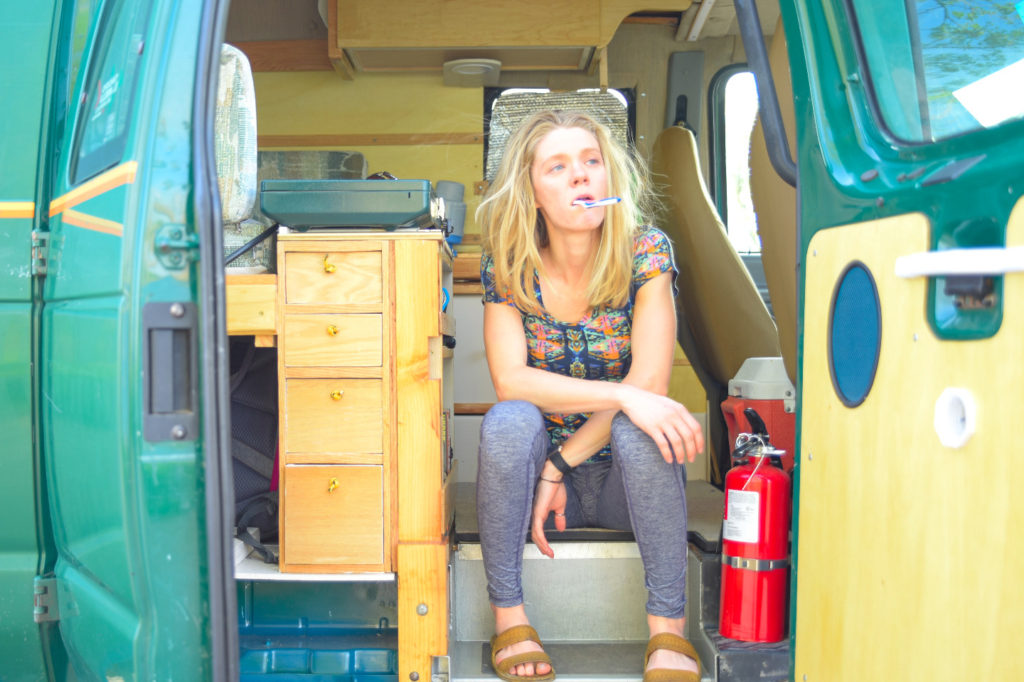
Now that you have a clear idea of what van living is like, it’s time to get into the nitty-gritty. You may have many questions about how people make the lifestyle work for them. How do you renovate a van? Where do you park at night? What about electricity, water, and heat? In this section, you can find the answers to your most important questions.
How To Live in a Van
In this section I am going to discuss the details: how van living actually works. Here you’ll learn about van builds, making money on the road, parking, cooking, hygiene, and trip planning.
Full-time vs. Part-time Van Life
Part-time Van Life.
Some people live in a van part-time. Most of these people either have a permanent residence and travel in their van on weekends or holidays, or they work seasonally and travel in a van in the offseason. Others will rent camper vans for short-term road trips.
Full-time Van Life.
Many of the influencers you see on social media are living in a van full-time. This means that their camper van is their home and they (most likely) do not have permanent residences anywhere else. This is the cheaper option because they do not have another home to pay for. This also means that full-time van lifers aren’t able to have much more than they need.
Read more about what you can expect living in a van full-time here!
Van Builds
First of all, what is a “van build”?
Van builds refer to the renovations inside a vehicle. Often, van builds look like apartments on wheels, with hardwood floors, walls, kitchens, beds, appliances, and sometimes even bathrooms.
Van Life Vehicles
Sprinter vans aren’t the only vehicles van lifers live in. Many live in buses, trucks, and campers.
Camper Vans.
The classic van life vehicle is, well, a van. But there are many makes and models van lifers use as their mobile home. The most popular vans are Ram Dodge Promasters, Ford Transits, and Mercedes-Benz Sprinters. Other vans include Ford E-Series, Chevrolet Express, Chevy Astro Van, and so on. The van models on the market are seemingly endless!
Skoolies.
Renovated buses, AKA “skoolies,” are also very popular. From short buses and school buses to old Greyhounds and double deckers. Skoolies offer more space than vans and often have more windows. Used buses are pretty easy to find on online marketplaces like Craigslist and Facebook Marketplace.
Trucks.
Think of a pick-up truck with an apartment in the bed. That’s what many truck builds look like. Not only do people build out pick up trucks, but some renovate box trucks, too! Building out a box truck takes some innovation to include doors and windows, but they are a fun and creative option.
Campers.
Campers are not always recognized as van life vehicles. Generally, campers (not RVs) are van life-certified if the occupants are living in it full-time and the camper has been personally customized. Even if a camper isn’t technically a van life vehicle, it’s still a great option for those looking to live on the road!
Building out your Van
Renovating your Van Yourself.
In 2018, 79% of van lifers renovated their van themselves. (³). This is often the cheapest and most fun option. Building your van yourself allows you to design it to meet your every desire. It also saves you a lot of money in the long run.
Hiring Someone to Renovate your Van (or to Help).
Some people choose to get professional help with their build. This can be cheaper than buying a pre-build van but can be an expensive option. This option speeds up the build and guarantees there will be fewer mess-ups, plus you still get to design it.
Buying a Pre-built Van.
This is an expensive option and doesn’t let you personally customize the build. Most van lifers don’t choose this option for these reasons. However, pre-builds are often done by professionals, which means they are high quality. And pre-builds are move-in ready.
Making Money when Living in a Van
One of the most frequently asked questions van lifers get is, “How do you make money?” Finding work is a major concern for most van lifers. However, it’s easier than you think to make money on the road.
Want more detailed information? In my article, How to Make Money Living in a Van, I go into detail about work options for us nomads. From side gigs to building a career. Plus, I give you plenty of resources to look into.
Full-time Work at a Permanent Location.
Some people living in vans keep their full-time positions in permanent locations. Most cities in the United States have free street parking or other parking in safe and quiet locations (see “parking your van overnight” below for more). Van lifers with these jobs often take advantage of this free parking and may use weekends and vacations to escape to the wild.
Seasonal & Temporary Work.
This is a popular option for many nomads. Working seasonally and doing temp jobs guarantees you aren’t tied down to one location for very long. Many people work for the National Park system or on farms and gardens. And many take advantage of temp work during the holiday season. Then, in between jobs, they are free to roam.
Remote Positions.
If you can score a remote job, take it! Many companies have remote positions available and if you have marketing, media, accounting, or communications skills, getting a remote job will be much easier. Depending on the work that you do, you can also ask your employer to be fully or partially remote.
Start your Own Remote Business.
This is a viable option! And many van lifers do it, including me. I’ve seen people become freelance artists, manage properties, start blogs, and so much more. Working for yourself allows you to have complete time and location autonomy, which is ideal for van living. It’s not a get-rich-quick scheme but it will give you more independence in the long run.
Profit from your passions! Blogging is alive and well and you can make a profit from it, too. With the help of the Blogging Fast Lane Accelerator course, this very blog has come to birth and is thriving. You don’t need to be a writer or a tech genius to be a successful blogger. Traveling Homestead Project wouldn’t be as successful as it is without the BFL community.
Parking your Van Overnight
When first getting into van life, many people wonder where they can park at night. Making sure your parking spot is safe is important. And many people want to know how to find quiet, free, and legal overnight parking and camping, too.
Public lands.
Bureau of Land Management, National Forests, and other federally owned lands in the United States are open to free dispersed camping. Especially if you are traveling west of the Continental Divide, there is public land almost everywhere.
Urban Street Parking and Parking Lots.
If you’re traveling through a city or an urban area, this is your best free and legal option. Many cities have free parking near parks or on quiet side streets, and stores like Walmart and Target let you stay overnight at most of their locations. It’s always best to ask the store manager first!
Campgrounds.
Some are free, most are not. But they are a dependable option in a pinch or if you want a to sleep with facilities. Every campground is different so it’s best to do your research before deciding to park at one for the night.
Cooking, Bathing, Pooping, & Self-Care in a Van
Cooking in your Van.
Many van builds have kitchens. Some have full kitchens, others have the minimum. Regardless of the set up there are many options for cooking in your van. Van lifers without full kitchens often have camp stoves and something to hold water. And if the weather is nice, some even cook over a fire!
Bathing.
This is another common concern. For those without installed showers, creativity is required to bathe. Bathing options usually include showering at the gym, in natural water sources, at truck stops, or sponge bathing.
Pooping.
And here is yet another common concern. Like showering, having a reliable place to poop takes creativity for those without toilets. Many poop at gas stations and grocery stores, others poop in the woods or have a container like a bucket.
Self-care.
Self-care means a lot of different things. Taking care of ones physical health is important, but so is taking care of your mental and spiritual health (if that’s for you). When you’re traveling full or part-time, self-care is abandoned easily. Good self-care is critical to living in a van long-term. Therefore developing a strong self-care routine is highly recommended.
Trip Planning When Living in a Van
Now for the fun part!
A major part of van life is planning out where you want to go, what you want to see, and what you want to do. For some, van life isn’t about travel, and that’s ok, too. But the beauty of van life is that saving up and spending your money on road trip adventures becomes easy.
This part of van life is personal. Trip planning is specific to various needs and desires. However, I do have a few pieces of advice to help you with your trip plan.
#1: Travel Consciously
When I first moved into my car, I made the mistake of traveling wherever I was called to in the moment. I was privileged enough to have the financial ability to do that in the short term, but I ran out of money faster than I could have. Looking back, I wish I had been more conscious about my adventures. This would have let me do more of what I wanted to do without wasting so much time and money.
#2: Keep an Eye on the Budget
This may seem obvious, but it’s important to emphasize. Even if you don’t actively budget, it’s important to keep track of your income and spending. Not only will this prevent money shortages, but it will also help you see when there is wiggle room in the budget for more adventure.
#3: Dream Big
Even if the budget is small. Keeping your eye on the prize will help you remember why you chose this lifestyle. Even if travel isn’t your major “why,” having travel goals will make van life more exciting.
I recommend making a list of everything you want to do. Then have the list available for you to see often. This will continuously remind you of those dreams and let you add to the list easily. Once you’ve clarified your dreams, then you can take action!
The Reality of Living in a Van
Although van living can be a dream, it has its cons. I love living in my van and I wouldn’t trade it for anything. But it’s also a ton of work. So what are the most common downsides of van life?
#1: Stigma
For most young people, living the van life is a dream lifestyle. However, there are many people who still hold a stigma against us nomads.
“Van Down by the River,” a famous Saturday Night Live Skit, is a perfect example of the classist stigma some people hold against van lifers. Living in a van, to some, has the same stigma surrounding it that homelessness does–one of rejection, failure, and being a waste person.
And let’s face it, our society wants us to be stuck in one place living a mediocre life. Capitalism wouldn’t survive without it. Therefore, many people living conventional lifestyles look down on anyone breaking out of that mold.
Therefore, living in a van is a statement rejecting the harmful classist stigma.And with the van life becoming popular in mainstream media, the stigma is disappearing quickly.
#2: Instability
When you’re living in a van, you are literally ungrounded. For those who are on the road, income may be unstable, car maintenance issues arise unexpectedly, and planning your weeks may not be possible. I have heard of a few people giving up the van life because their anxiety got out of control. And, although van living can be relaxing and rejuvenating, the instability can make it very anxiety-provoking.
Depending on your situation, there are always solutions to this issue. Good self-care, creating a grounding and comfortable home inside the van, preparing for the unexpected, and avoiding pushing yourself too far are all important to creating more stability.
#3: New and Uncomfortable Situations
Ever changed a tire in the middle of the Utah desert? Ever shower in a gas station? Or poop in the woods? No? Well, prepare yourself.
Van lifing is an unconventional way of living that comes with unconventional solutions to problems. This way of life may be cheaper and more liberating than living in an apartment, but it’s definitely not easier.
Picture something between tenting and cabin camping, then add car maintenance on top of that and you get a decent picture of what the lifestyle is like.
Even though living in a van takes some getting used to, you do get used to it. You learn about the quirks of your lifestyle and quickly learn how to deal with them. If you can get over the initial learning curve, the once inconveniences become casual parts of your day.
#4: Finding Community
I hear this set back most often. When you’re living on the road full-time, it’s difficult to develop close relationships and find lasting community. For some, this isn’t much different than being a young adult in a new chapter of your life, but it’s still very difficult for some. And in 2020, COVID-19 has made this even more difficult.
As I’ve described above, there are solutions to this problem, but they do take some effort. There are apps and gatherings for the van life community. It’s also possible to stay in one area for a period of time to get to know locals. Finding a caravan of van lifers is also a fun option.
#5: Money
And then there’s. . . Money. I talk in some detail above about making money on the road, but it’s still important to emphasize how stressful the topic can be.
Some people who begin living the van life also begin their new job or work routine at the same time. My advice here is to start one first, get the hang of it, then start the other. For me, I lived out of my car for months before launching my business. This allowed me to get used to the flow on the road and it made starting my business a much easier transition.
One More Thing
If you want the full rundown on the problems van lifers come up against, check out my article on living the van life. Here I describe eight major issues van lifers encounter and give you detailed solutions for every problem. It is the ultimate guide on getting over the road bumps (pun intended).
Still have questions on how to live in a van? Leave a comment below!
ARE YOU FIT TO LIVE IN A VAN?
At this point, you may be thinking that you could live in a van, too. Even if you’re skeptical, you may still be dreaming about it.
In my article about van living, I give you a series of questions to answer to help you better understand if the van life is for you. Plus, I give you information and further resources to help you out, too!
RESOURCES FOR LIVING IN A VAN
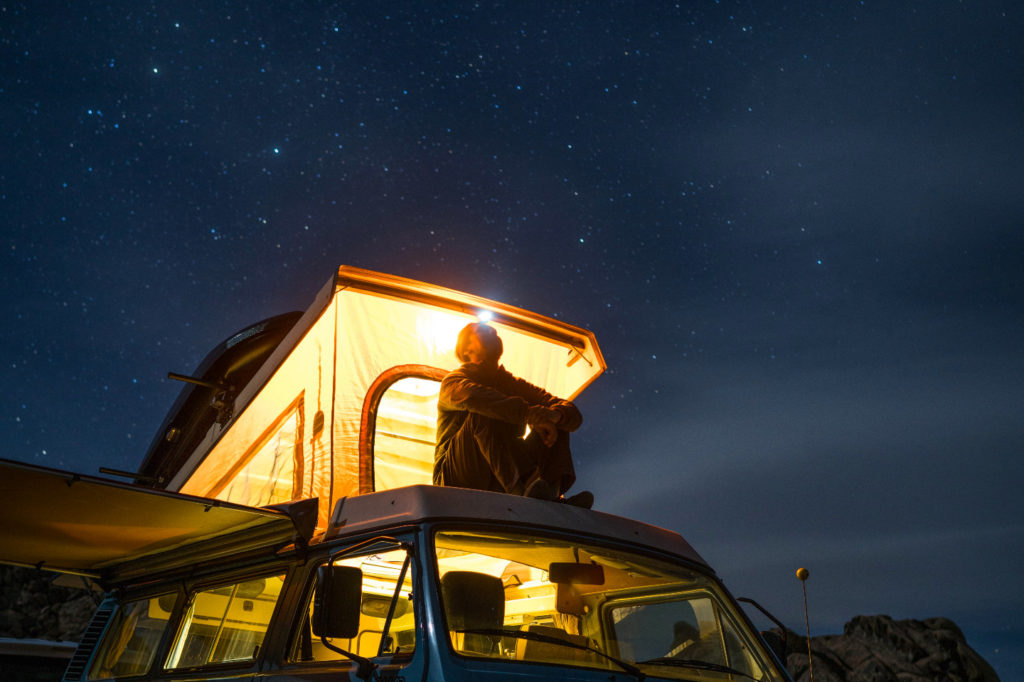
There is an abundance of information on vanlifing available. From books and podcasts to blogs and social media pages. Below are my top recommended resources on van living.
Books
Books are inspirational. The books below are my favorites for learning about the van life and getting van inspiration.
Van Life: Your Home on the Road. If you’re looking for van build ideas, this is the book for you! The photography in this book is not only stunning, but crowdsourced (and in some cases exclusive!)
Vanlife Diaries: Finding Freedom on the Open Road. Read about people making the van life their own and get van living guides, too! This book is all about inspiration, including stunning photographs of van rigs!
Skoolie!: How to Convert a School Bus or Van into a Tiny Home or Recreational Vehicle. School buses are fantastic vehicles for tiny home conversions. Whether you want to convert a van or a bus, this book is a useful guide.
Get a more detailed review of these books and more by heading to my article, Van Life Books.
Podcasts
If you’re like me, having a library of podcasts at the ready is a necessity. Podcasts are one of my favorite ways to preoccupy my mind while driving or cleaning the house. These three podcasts are my favorite van life and travel podcasts.
Humans of Vanlife. This is a great podcast to hear the individual stories of van lifers all around the world. Humans of Vanlife is a funny, raw, and heart warming podcast.
Nomads at the Intersections. Once Women on the Road, Nomads at the Intersections is a podcast all about tackling the unspoken truths in the van life community. It’s a space for people in the margins to discuss their experiences on the road.
Underneath it All. This isn’t a van life podcast, but it’s one of my favorite outdoor podcasts. Hosted by a Latinx thru-hiker and previous van lifer, this podcast explores how people find solace in the outdoors.
Blogs
There are so many van life blogs on the web! You’ve obviously found mine. But there are three other van life blogs that you need to know about.
Parked in Paradise. This blog is one of the top van life blogs out there. If the topic is van life, they probably have an article about it.
Gnomad Home. I adore John and Jayme. I first discovered them through a workshop hosted by Diversify Vanlife and have followed them religiously since. Their content is informative, fun, and full of character.
One Chick Travels. If you’re looking for more narrative than guides, One Chick Travels is for you. Kaya is a solo female van lifer as well as a write, filmmaker, and photographer. Her articles are very personal and enthralling.
FUTURE OF THE VAN LIFE MOVEMENT

Van Life is Becoming More Accessible
As more people join the movement, the more resources are available to help future van lifers join the movement, too. The people in this community are so excited about more people joining us at the table. And there are many trying to make that happen.
If you want more information on resources available on van life, scroll up to “van life resources” above!
Van Life is Becoming More Diverse
As we outline in the “demographics” section, van life is becoming more diverse. And there are more and more people working to make the van life community inclusive and equitable.
Van Life is Becoming a Viable Alternative
To capitalism, to expensive housing, to being stuck where we don’t want to be. It’s also a way to live off-grid and rebel against consumerism. We not longer need to be in a job we hate, making less than we deserve, renting an apartment that’s too expensive, and consuming more than we need. And van life is a way to denounce all of that.
Van Life is Allowing People to Define Their Lives
Moving into a van and hitting the road is the ultimate statement that you’re taking control of your life. It’s the ultimate metaphor for liberation. Imagine living in a home that you built yourself and you can take that home almost anywhere. Especially if you work for yourself or work remotely, you have control over much of your time and energy.
Van living is a form of creative expression, it’s a loving affirmation that you prioritize yourself, and it’s a rebellion against the systems that are not working for us. It’s a way of living that is fulfilling and joyful.
LIVING IN A VAN: CONCLUSION

Van life is magic.
The van lifestyle is a symbol of liberation, an ode to hard work, and a dedication to spirit. The van life community is like no other and is growing every day. From the hippies of the sixties to the modern-day millennials, van life is becoming a viable option for many. Traveling the world, living sustainably, and taking control of your life has never been easier.
Living in a van isn’t easy. It takes a lot of work, especially if you are coming from a marginalized community. But with more people holding the door open to this way of life, living the van life is becoming easier to achieve.
There are van lifers in every corner of the world itching to tell their story. And if you feel called to the van life, I’m here to tell you it’s yours if you want it.
Now I have a question for you: if you could move into a van tomorrow, what is the number one thing you would be excited about? Leave your response in the comment section below 🙂
Thanks for stopping by <3
Affiliate disclaimer: by clicking some links in this article and making a purchase, I may receive a small commission, at no extra cost to you.
REFERENCES
¹ January 24, 2020. “Life on wheels: The evolution of van culture.” The Weekender.
² December 17, 2019. “War on Drugs.” History.
³ April 21, 2018. “Van Life Statistics.” Outbound Living.

